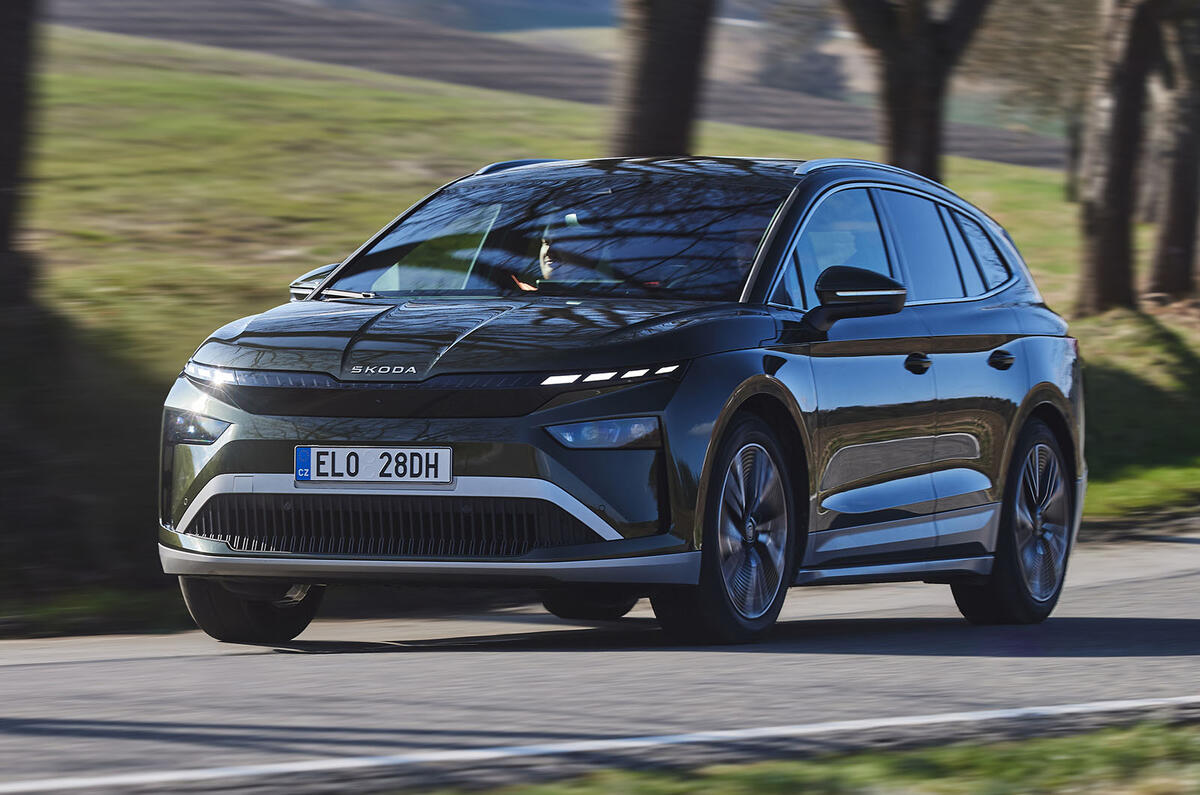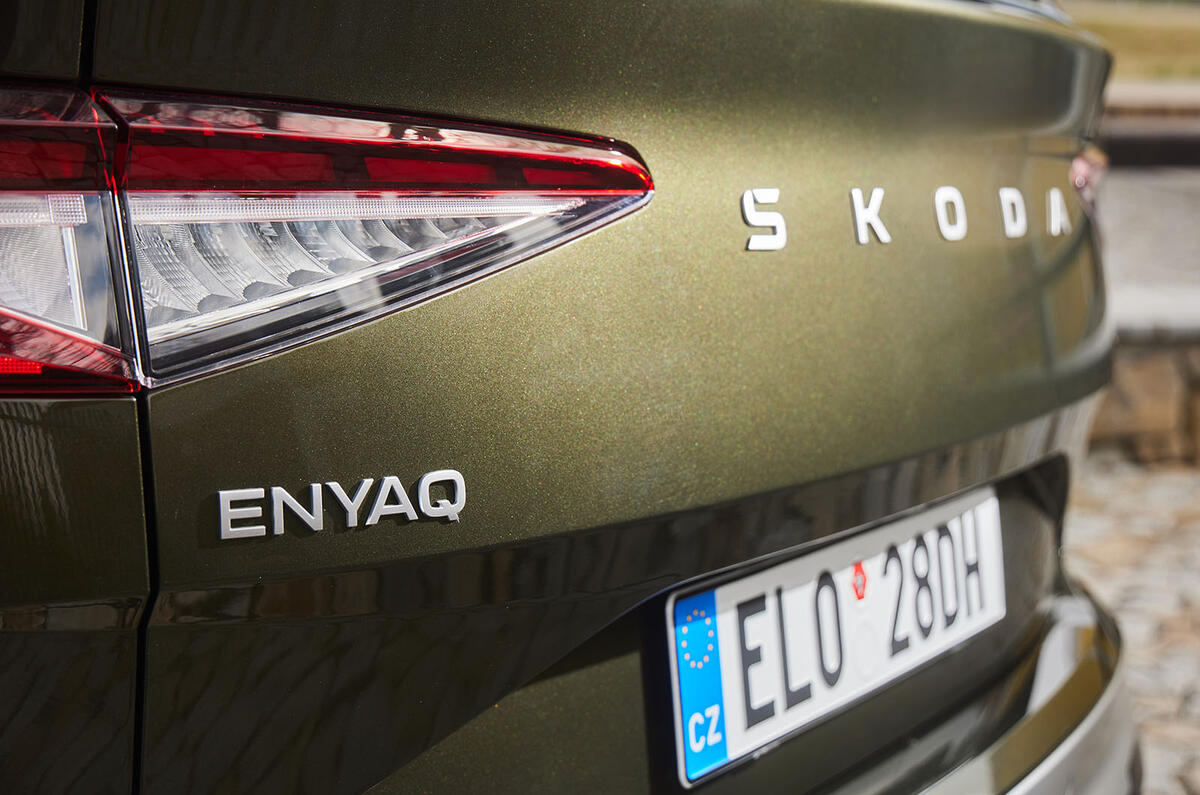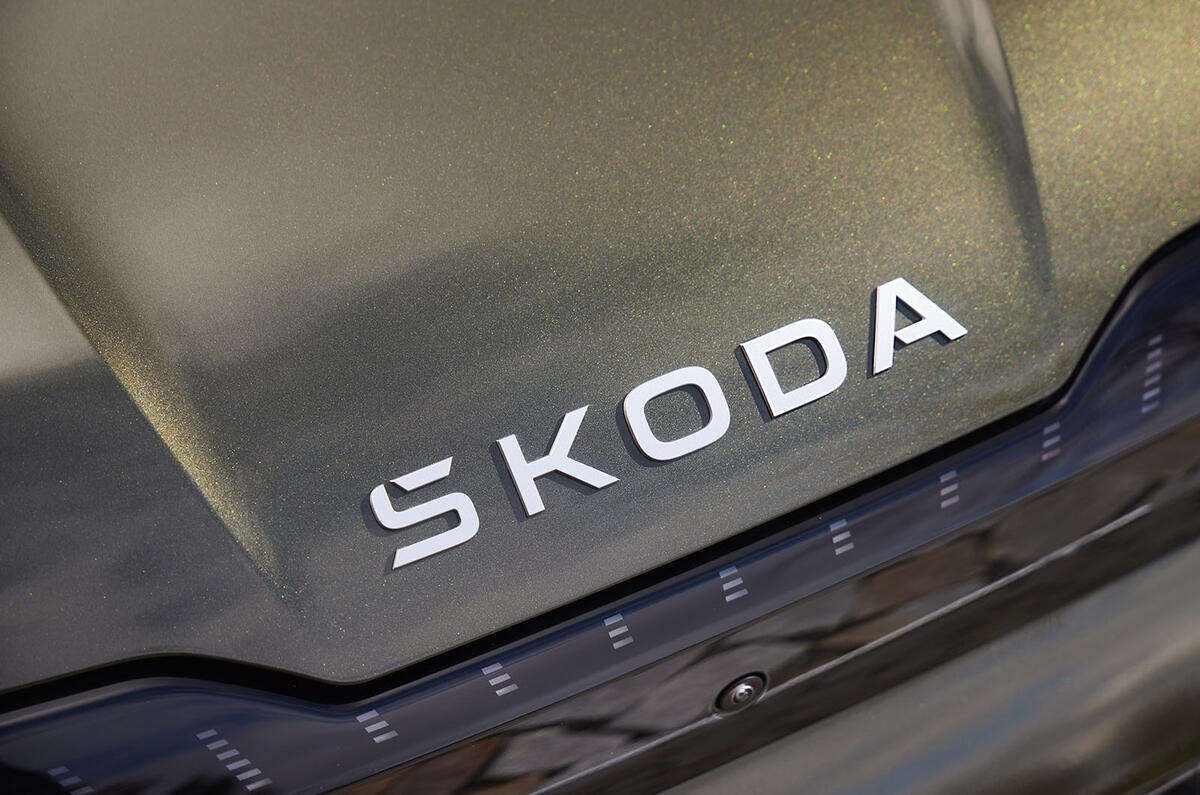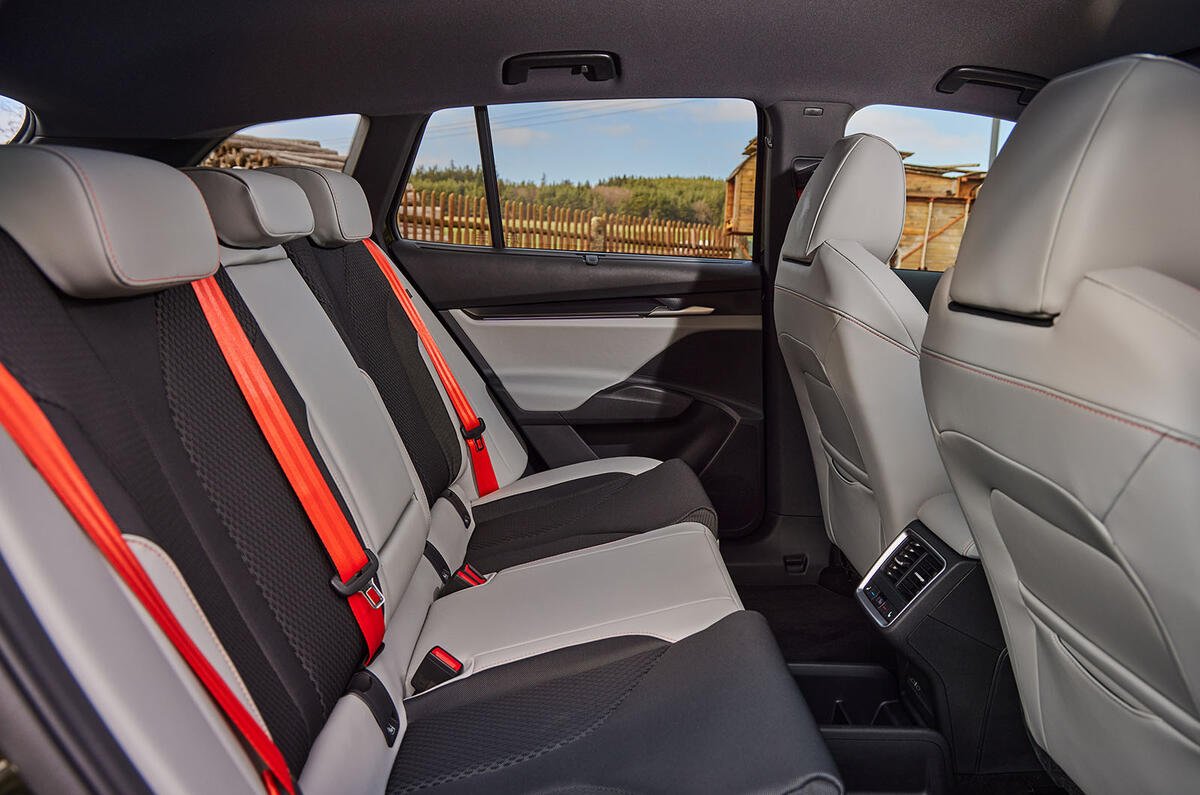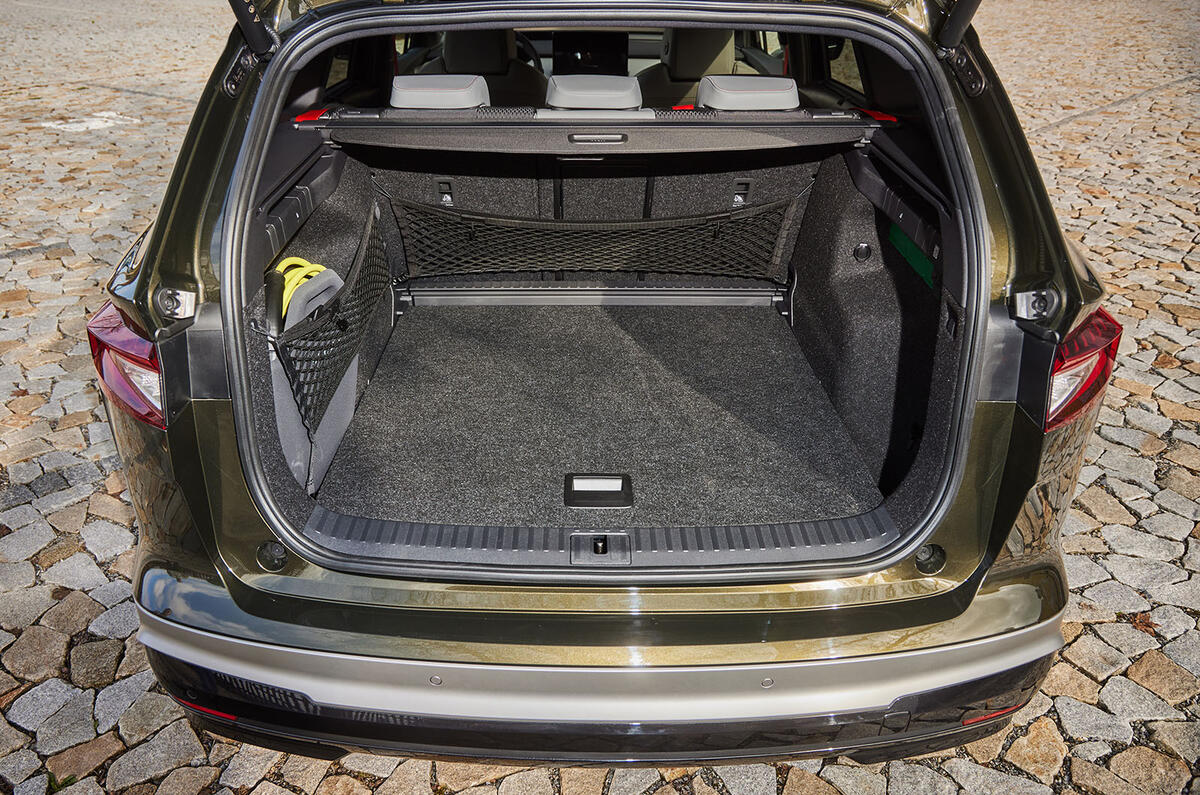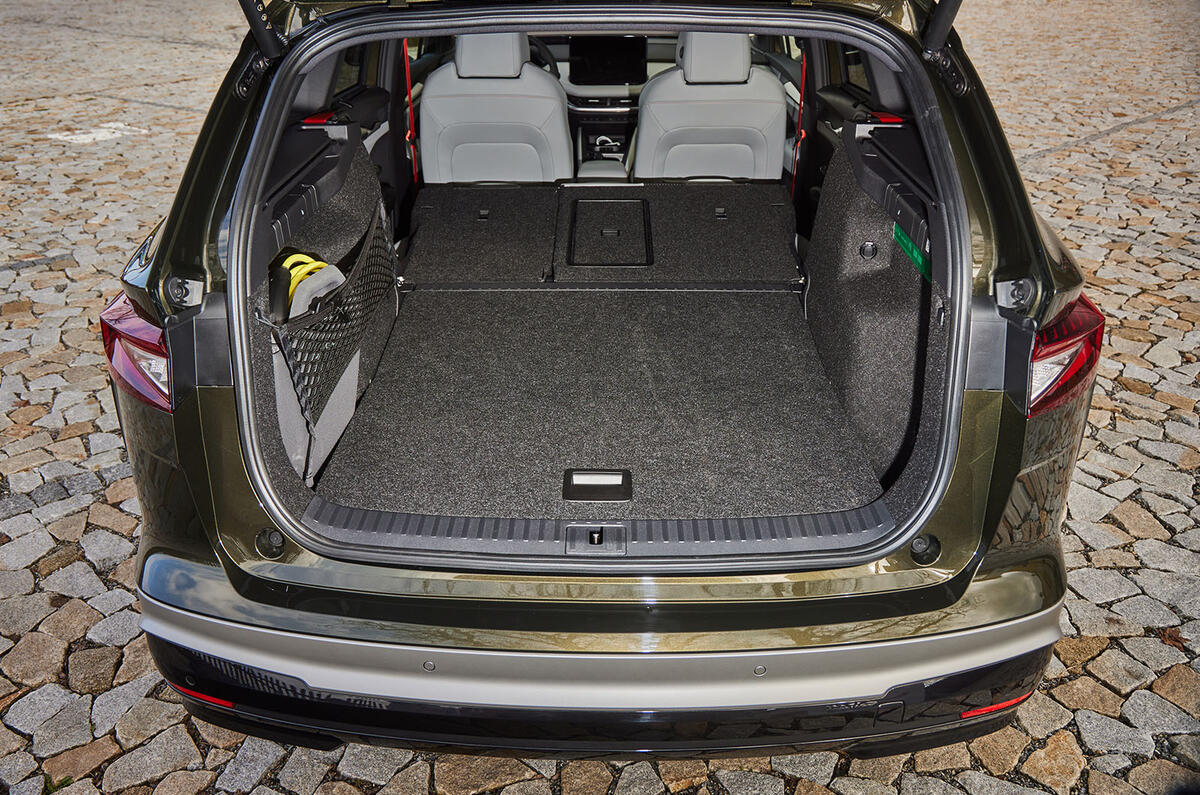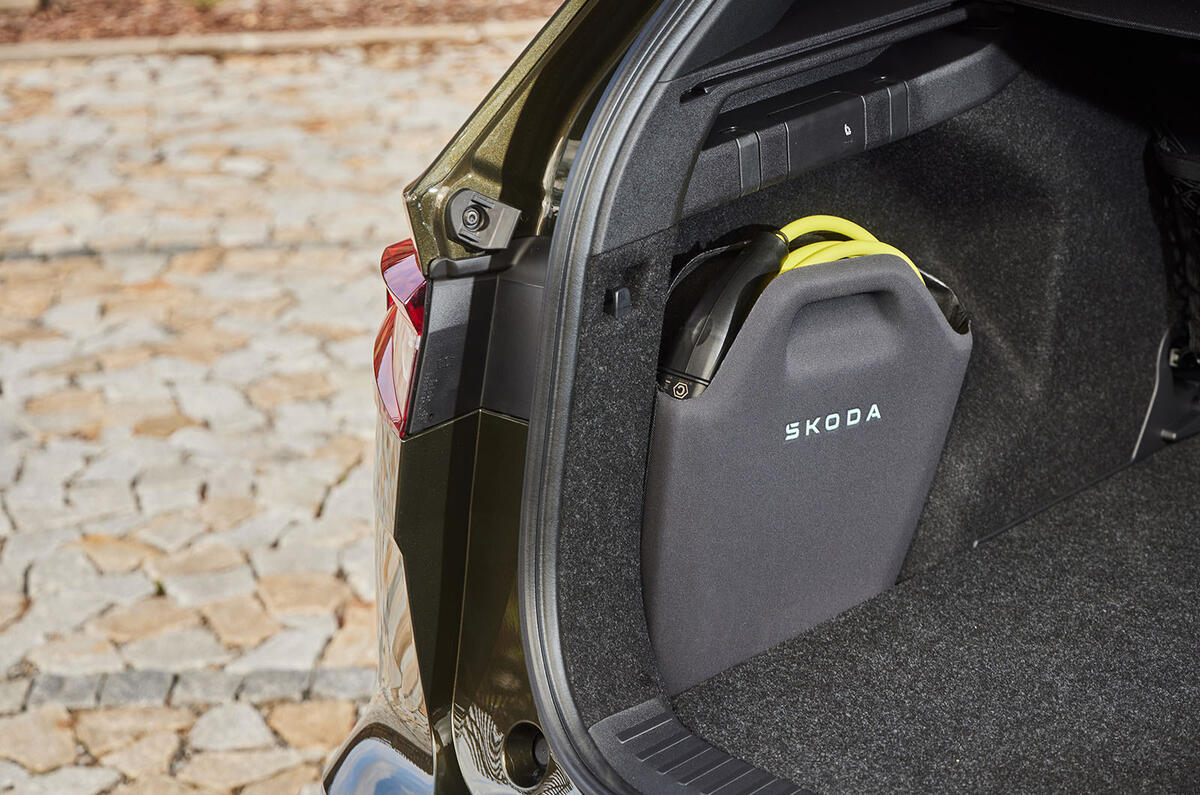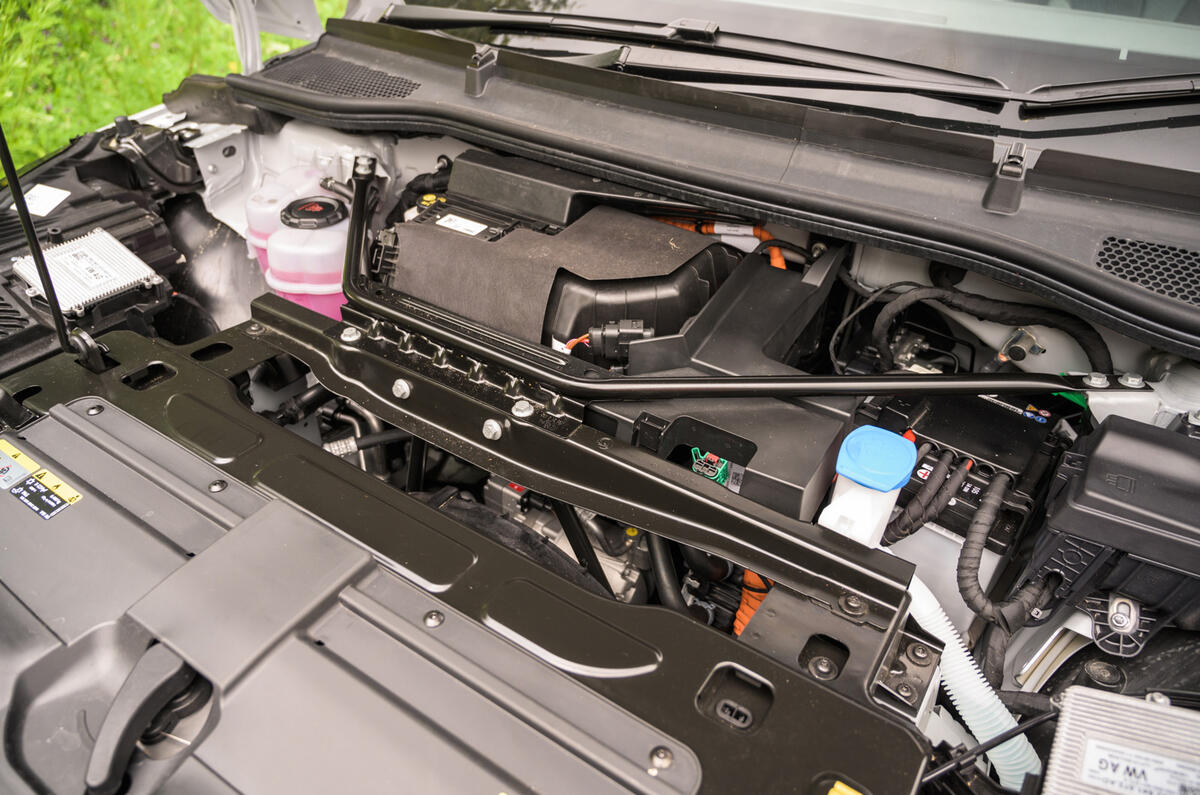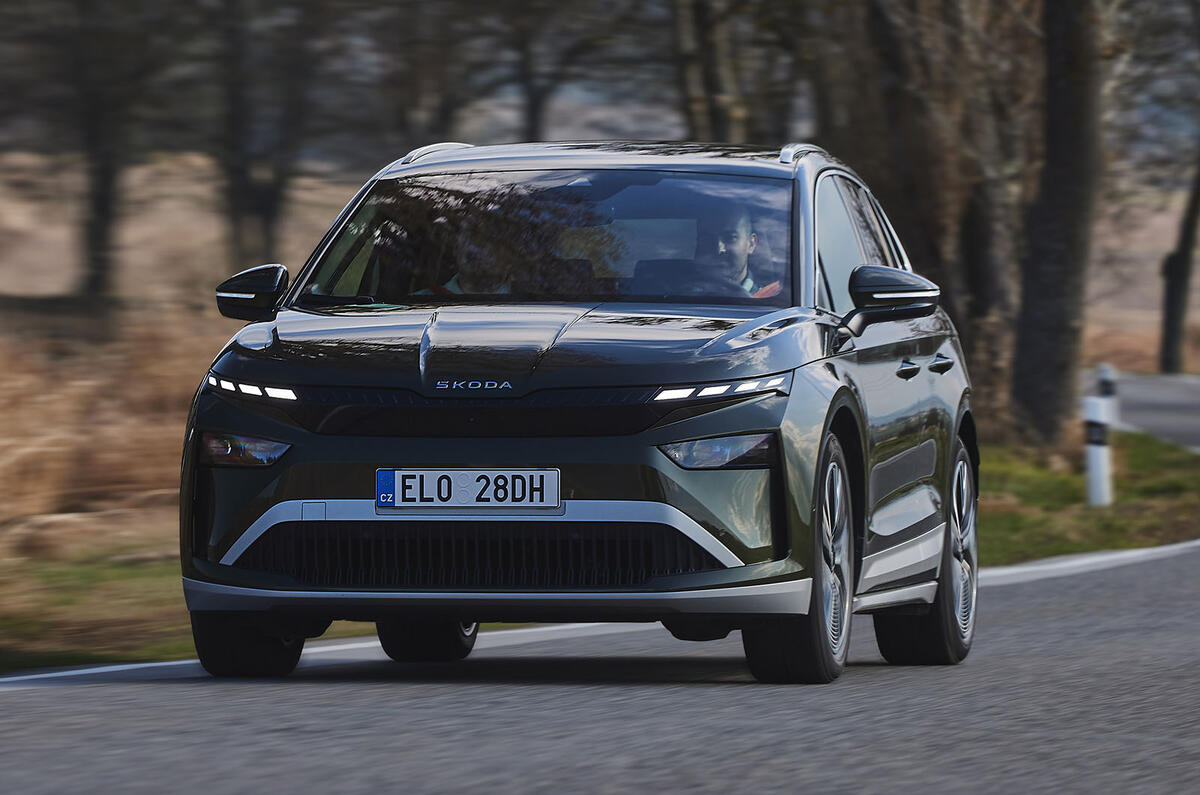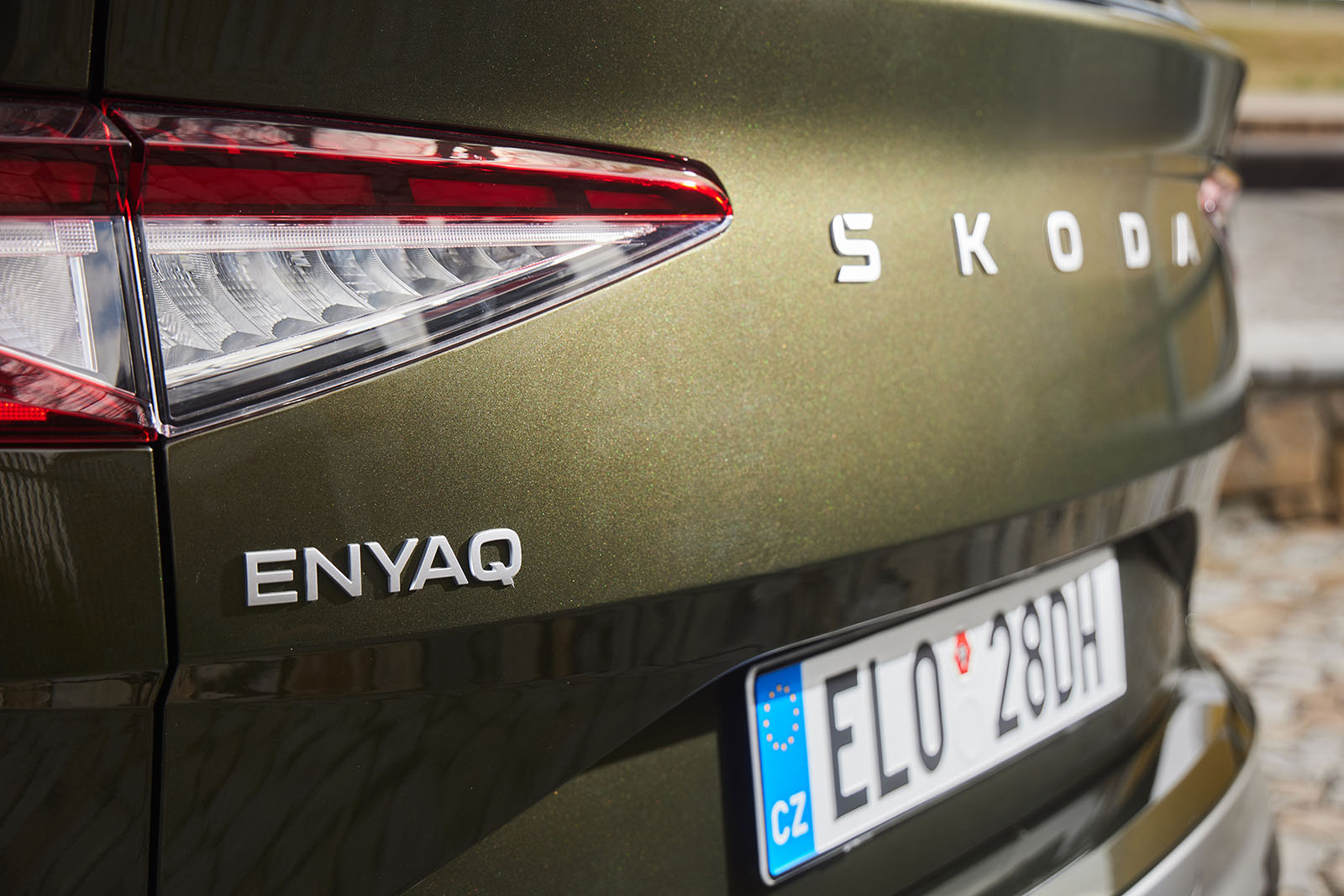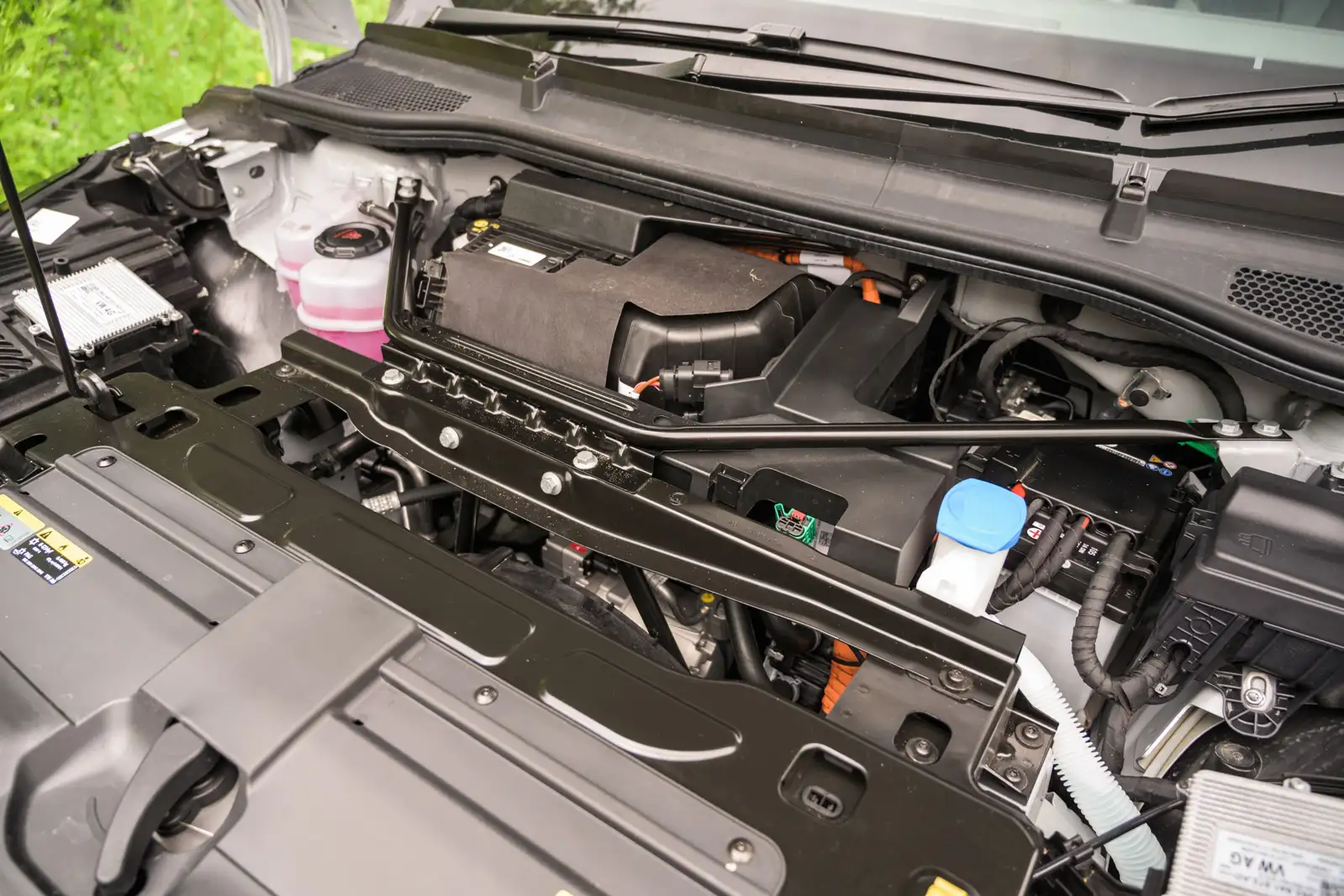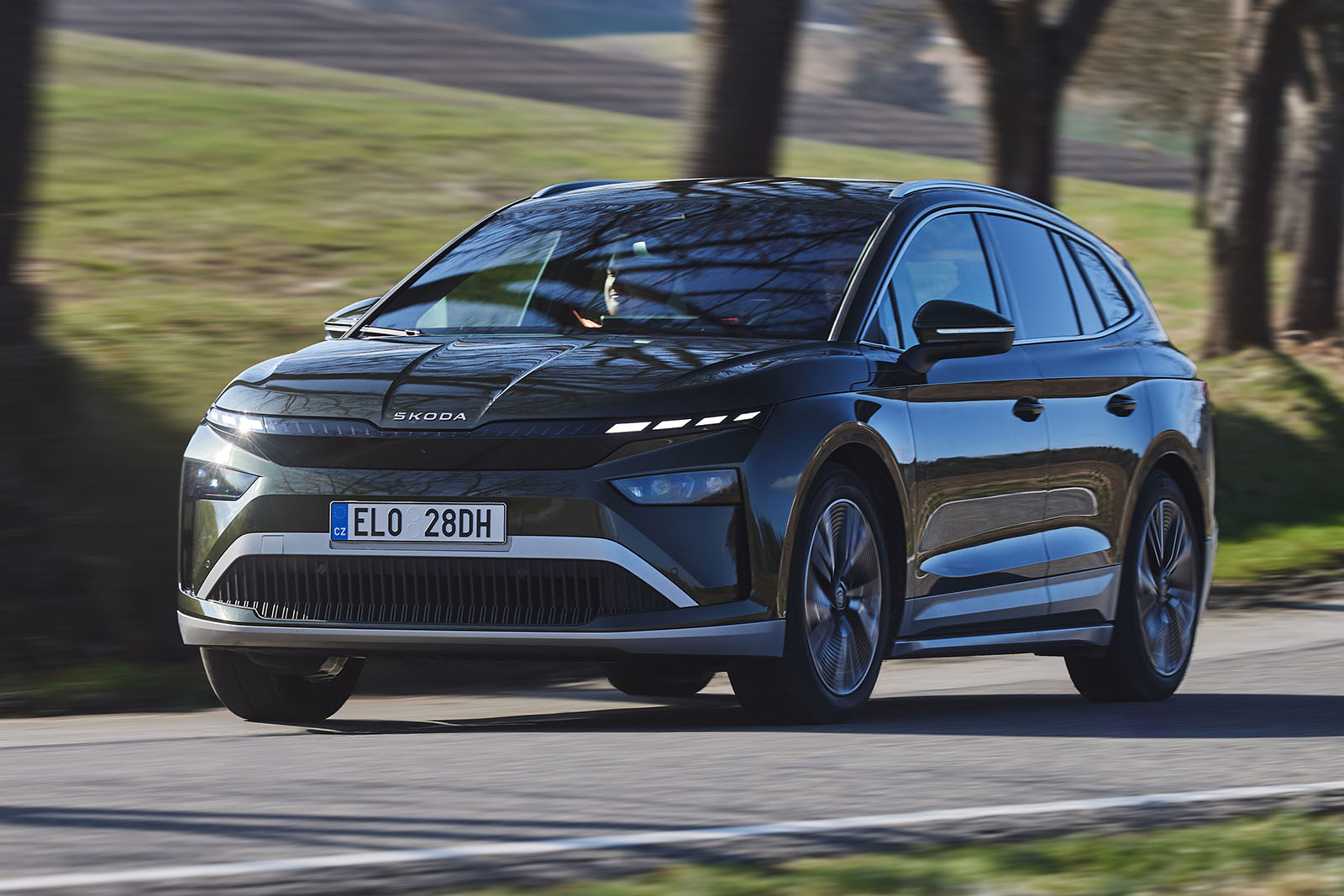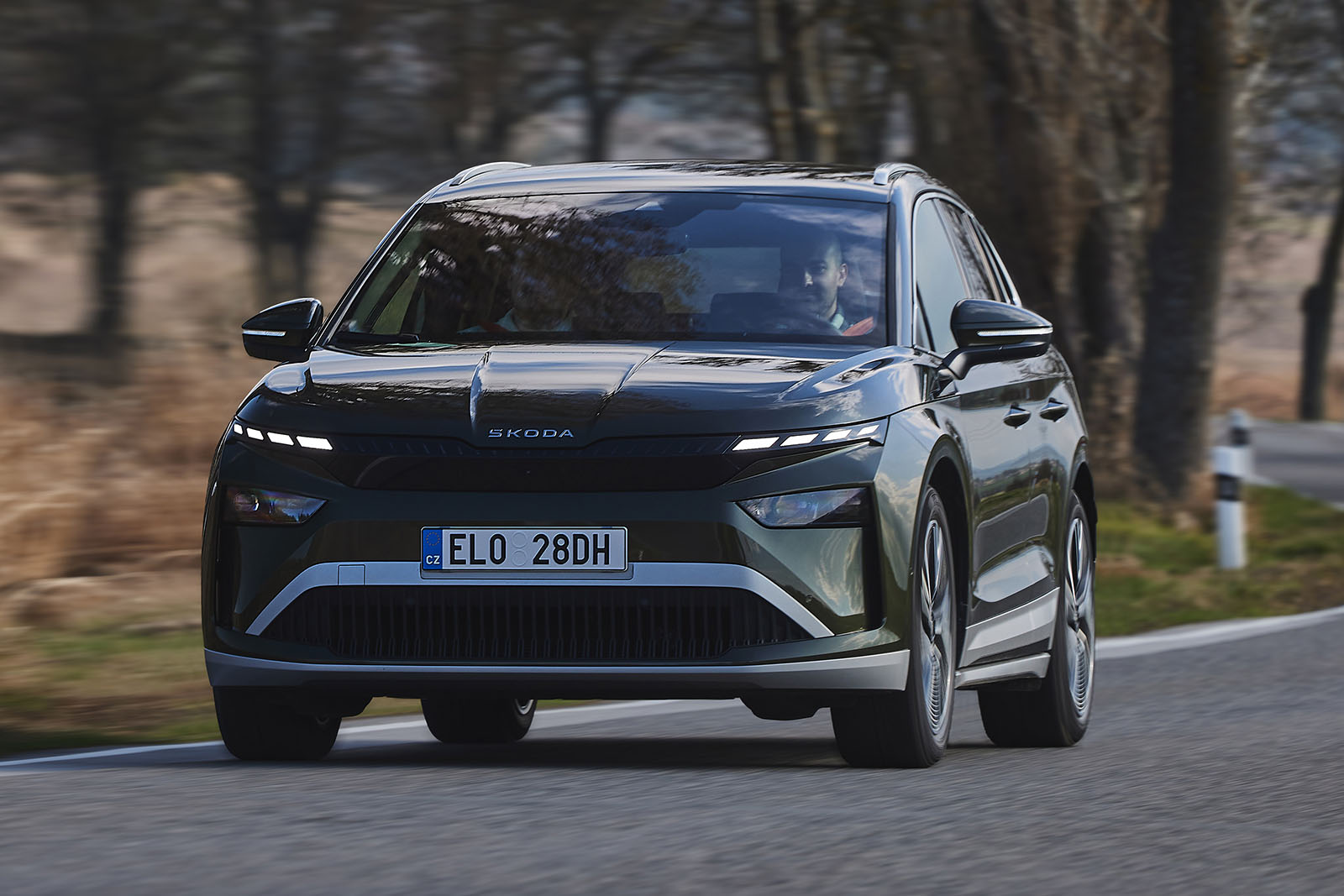Skoda has given the Enyaq a more comprehensive standard equipment list for this generation. There's a new-look steering wheel that, along with the front seats, is heated as standard, and you get tri-zone climate control straight out of the bag.
On top of this, the upholstery has more of a focus on sustainability than before. If you go for the new 'Lodge' design, which we think looks excellent and feels plush, the seats are made from recycled fishing nets, fabric scraps from factories and old carpets, while the dye used for the leather seats on higher trim levels is made from olive leaf extracts.
Finally, there are a series of new 'Simply Clever' features for this generation. One of them is a QR code in the boot which links to the user manuals. You also get an ice scraper that doubles up as a tyre tread depth gauge sitting in the tailgate, as well as the usual umbrella in the doors and coin holders, the latter of which are a nice touch if a little antiquated.
Perhaps over and above the small details, however, you buy a car like this for the amount of space it offers. Indeed, the cab-forward proportions and long rear overhang pay dividends for the packaging of the Enyaq’s interior, resulting in a spacious-feeling cabin.
You get a 585-litre boot with the rear seats up. That beats the technically-identical Volkswagen ID 4 and Audi Q4 E-tron by some margin, as well as the Kia EV6 and Hyundai Ioniq 5. Fold the seats down and the Enyaq's boot extends to 1710 litres, again almost class-leading but beaten by the Tesla.
In the coupé version, boot space reduces to 570 litres with the seats folded up, and 1610 litres with them down; still not what you’d call pokey.
There is more than enough head and legroom on the back seat, even in the middle, thanks to the absence of a centre tunnel. Even in coupé guise, where headroom is sacrificed for the sloping body, those over six foot aren’t likely to struggle.
The standard seats offer the usual adjustments, including lumbar support, although side bolstering is limited. You’re kept comfortable on long journeys, though, with good under-thigh support.
Multimedia
The same 13in infotainment screen and 5in digital instrument cluster are carried over from before. It has some updated software aimed at making it easier and more intuitive to use, with clearer menu structures, sharper graphics and a faster processing unit.
Skoda has put its own finish on the menu screens, which actually make it easier to use than the efforts from VW or Audi. More physical buttons or dials, like the rotary knobs on the Kodiaq, wouldn't go amiss, however, not least because the menu icons for the HVAC system and heated seats are quite small.
That being said, there are two bars of customisable shortcuts that are permanently on screen, which makes it easy to access things like the settings menu, switching certain ADAS functions off, smartphone mirroring and battery preconditioning.
Some annoyances remain, however. The touch bar for the volume is still unlit, and the settings menus require you to rotate a picture of the car to find the right function, which is very form-over-function and not very Skoda.



